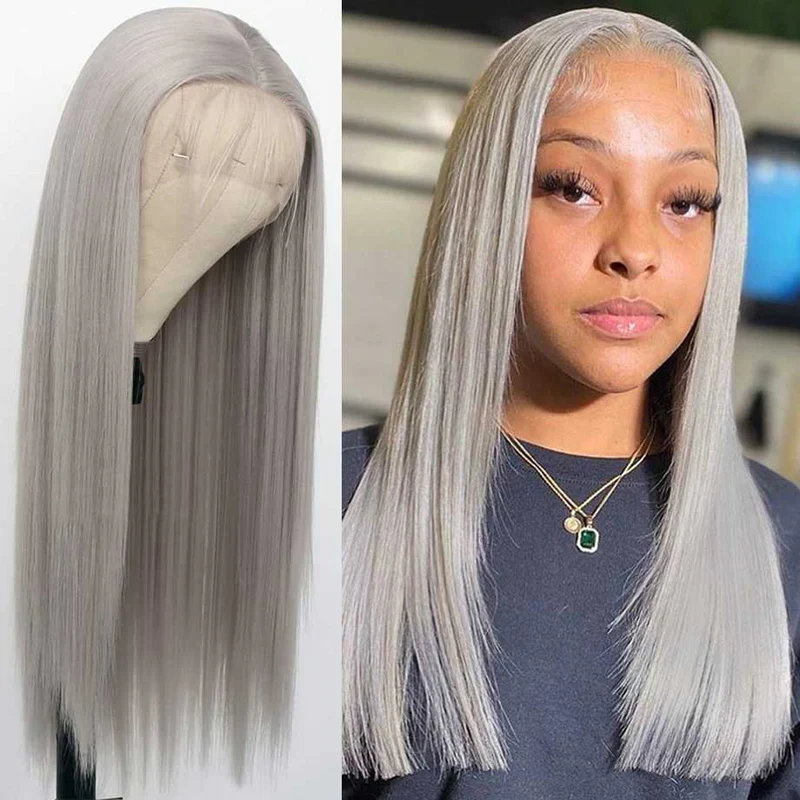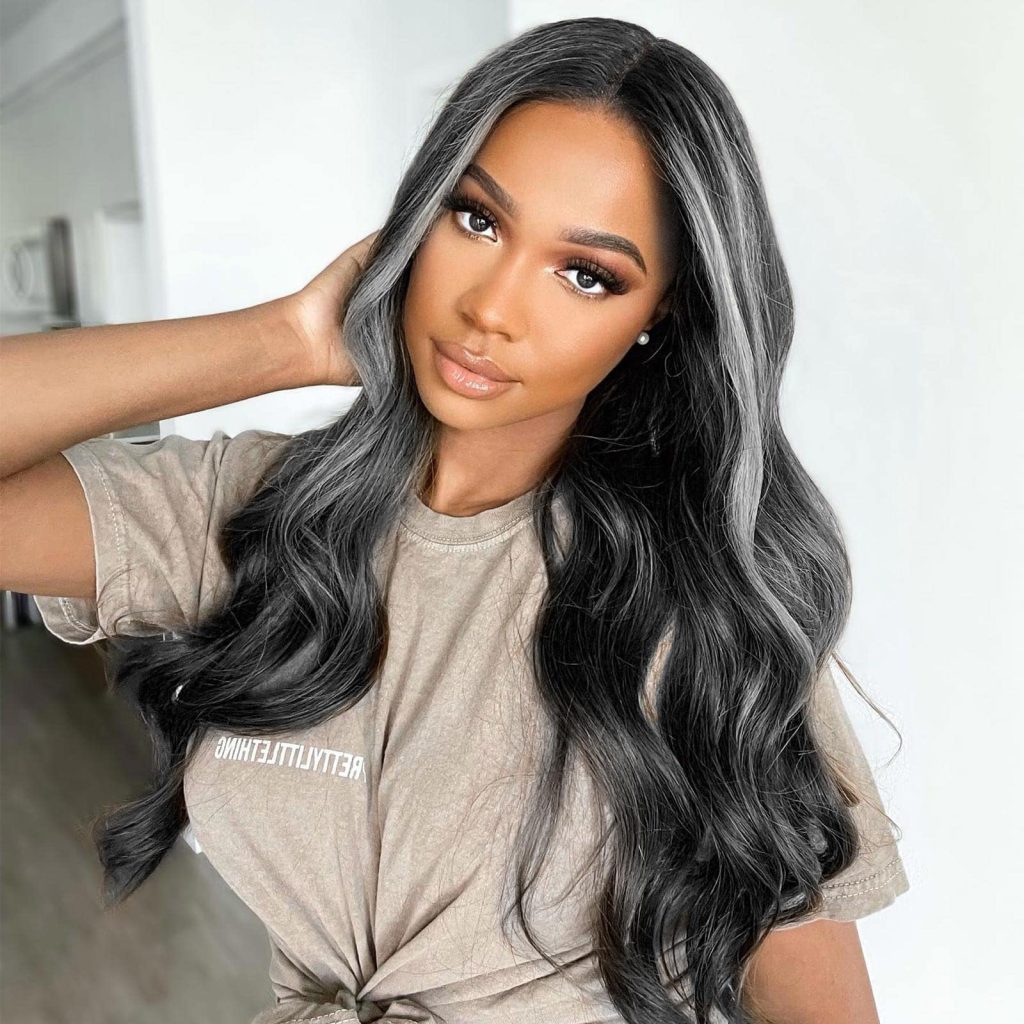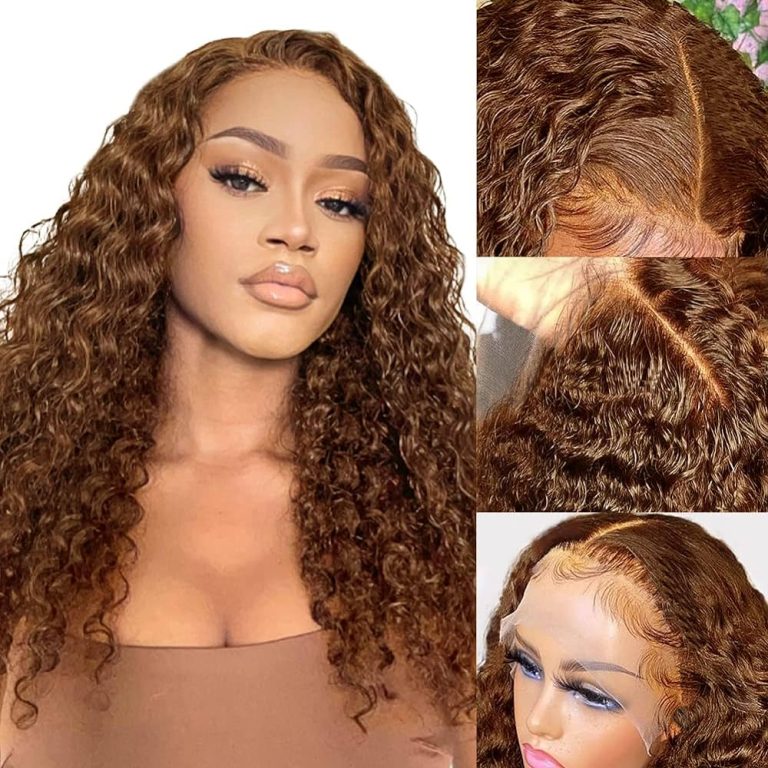
The Ultimate Guide to Gray Wig: Embrace the Silver Revolution
What Are Gray Wigs?
Gray wigs offer a stylish solution for those seeking a silver-haired look. These hairpieces come in various shades of gray, from light silver to deep charcoal. Manufacturers craft gray wig using synthetic fibers or human hair. Synthetic options provide affordability and low maintenance. Human hair wigs offer a more natural appearance and styling versatility. Gray wigs come in different lengths, from short pixie cuts to long, flowing styles.
They feature various textures, including straight, wavy, and curly. Some gray wigs incorporate highlights or lowlights for added dimension. Lace front and full lace options provide a seamless, natural-looking hairline. Gray wigs cater to individuals of all ages and style preferences. They serve both cosmetic and medical purposes, addressing hair loss or simply changing one’s look.
The Rise of Gray Wigs in Fashion
Gray wigs have surged in popularity in recent years. This trend aligns with the broader movement embracing natural gray hair. Fashion influencers and celebrities showcase striking gray looks on social media. Runway shows feature models donning silver-hued wigs, setting new trends. The fashion industry celebrates gray as a chic, sophisticated color choice. Gray wigs offer a way to experiment with this trend without commitment. Younger individuals use gray wigs to make bold fashion statements. Older wearers find gray wigs that match their natural color progression.
High-end designers incorporate gray wigs into their collections. Street style enthusiasts embrace gray wigs for their edgy, urban appeal. The versatility of gray allows for diverse styling options. From punk rock to elegant evening looks, gray wigs adapt to various aesthetics. This trend challenges traditional notions of age and beauty standards. Gray wigs symbolize confidence and self-acceptance in fashion circles. As the trend continues, expect to see more innovative gray wig styles emerge.
Types of Gray Wigs
Gray wigs come in a variety of types to suit different needs and preferences. Synthetic gray wigs offer affordability and easy maintenance. They hold their style well, even in humid conditions. Human hair gray wigs provide the most natural look and feel. These allow for heat styling and color adjustments. Lace front gray wigs feature a sheer lace panel at the hairline. This creates the illusion of natural hair growth. Full lace gray wigs offer versatility in styling and parting. Monofilament gray wigs have a breathable, skin-like top for comfort.
Hand-tied gray wigs provide a natural hair movement and realistic appearance. Machine-made gray wigs offer a budget-friendly option for occasional wear. Capless gray wigs allow for better air circulation to the scalp. Integration gray wigs blend with existing hair for added volume. Partial gray wigs or toppers address specific areas of hair loss. Each type of gray wig serves different purposes and style goals. Understanding these options helps in choosing the right gray wig for individual needs.
Choosing the Right Gray Wig
Selecting the perfect gray wig involves several considerations. Start by determining the desired length and style. Consider face shape when choosing a gray wig cut. Oval faces suit most styles, while round faces benefit from longer lengths. Square faces look great with soft, wavy gray wigs. Heart-shaped faces pair well with chin-length gray wigs. Next, decide on the shade of gray that complements skin tone. Cool skin tones match well with blue-based grays.
Warm skin tones suit gray wigs with golden or beige undertones. Consider lifestyle when choosing between synthetic and human hair. Active lifestyles might prefer low-maintenance synthetic options. Those who frequently style their hair should opt for human hair gray wigs. Determine the cap construction that provides the desired comfort and appearance. Lace front caps offer a natural-looking hairline for those concerned about realism. Full lace caps provide the most styling versatility. Consider the level of care required for different gray wig types.
Synthetic wigs need less maintenance but have a shorter lifespan. Human hair gray wigs require more care but last longer with proper maintenance. Budget also plays a role in selecting the right gray wig. Set a realistic budget that balances quality with affordability. Consider purchasing from reputable retailers to ensure quality and authenticity. Trying on different gray wigs helps in making the final decision. Many retailers offer virtual try-on options for convenience.
Styling Gray Wigs
Gray wigs offer versatile styling options to suit various occasions. Start by gently brushing the wig to remove any tangles. Use a wide-tooth comb for curly or wavy gray wigs. For synthetic gray wigs, use specially designed wig brushes. Human hair gray wigs allow for heat styling with curling irons or straighteners. Apply a heat protectant spray before using hot tools. Create volume at the roots using a teasing comb or volumizing products.
Experiment with different partings to change up the look. Side parts add drama, while center parts offer a sleek appearance. Use styling products designed specifically for wigs to maintain the style. Dry shampoo can refresh the wig between washes. For updos, secure the wig with wig-safe pins or clips. Avoid using regular hair accessories that may damage the wig fibers. Add headbands or scarves for extra flair and style variation. For special occasions, consider professional styling services. They can create intricate styles while preserving the wig’s integrity. Remember to style gray wigs gently to maintain their quality and appearance. Regular maintenance ensures the wig stays looking fresh and stylish.
Caring for Gray Wigs
Proper care extends the life and appearance of gray wigs. Wash synthetic gray wigs every 6-8 wears or when they become visibly dirty. Use cool water and specially formulated wig shampoo. Gently swish the wig in the water, avoiding rubbing or twisting. Rinse thoroughly and apply wig conditioner if desired. Pat the wig dry with a towel and allow it to air dry on a wig stand. Human hair gray wigs require washing every 7-14 wears. Use sulfate-free shampoo and conditioner designed for color-treated hair. Gently massage the products into the wig, avoiding tangling.
Rinse with cool water and apply a leave-in conditioner. Air dry the wig or use a low-heat setting on a blow dryer. Store gray wigs on wig stands or mannequin heads when not in use. Keep them away from direct sunlight and heat sources. Use a silk or satin pillowcase if sleeping in the wig to reduce friction. Avoid swimming or exposing the wig to chlorine or saltwater. Trim synthetic wigs periodically to remove split ends. For human hair gray wigs, consider professional maintenance services. Regular care preserves the color and texture of gray wigs. Proper maintenance ensures the wig looks natural and beautiful for longer.
The Psychology of Wearing Gray Wigs
Wearing gray wigs can have significant psychological impacts. They offer a way to embrace aging gracefully for some individuals. Others use gray wigs as a form of self-expression and creativity. Donning a gray wig can boost confidence and self-esteem. It allows wearers to control their appearance and experiment with identity. Gray wigs can challenge societal expectations about age and beauty. They empower wearers to redefine personal style at any life stage.
For those experiencing hair loss, gray wigs provide emotional comfort. They restore a sense of normalcy and control over one’s appearance. Wearing gray wigs can be a form of rebellion against ageism. It celebrates silver hair as beautiful and desirable. Some find that gray wigs help them feel more authentic and true to themselves. Others enjoy the attention and compliments that unique gray styles attract. Gray wigs can serve as a conversation starter, breaking down social barriers.
They allow wearers to explore different facets of their personality. For some, gray wigs provide a sense of connection to older generations. They can be a way to honor family members or cultural traditions. The psychological benefits of wearing gray wigs vary from person to person. Understanding these impacts can help individuals make informed choices about wearing gray wigs.
Gray Wigs for Medical Purposes
Gray wigs serve important functions for individuals with medical hair loss. Cancer patients undergoing chemotherapy often choose gray wigs. These provide comfort and normalcy during treatment. Alopecia sufferers use gray wigs to restore their appearance and confidence. Gray wigs can help those with trichotillomania, a hair-pulling disorder.
They provide a barrier and alternative to pulling natural hair. Individuals with autoimmune disorders causing hair loss benefit from gray wigs. These conditions include lupus and thyroid disorders. Burn survivors may use gray wigs to cover scalp scarring. This aids in emotional healing and social reintegration. People with genetic conditions affecting hair growth turn to gray wigs. These offer a non-invasive solution to hereditary hair loss. Post-surgical patients use gray wigs during the hair regrowth process.
This eases the transition back to their natural hair. Medical-grade gray wigs often feature special construction for sensitive scalps. They may include features like extra padding or breathable caps. Some insurance plans cover the cost of gray wigs for medical necessity. Support groups and charities often provide gray wigs to those in need. Wearing a gray wig can significantly improve quality of life for medical patients. It allows them to face the world with confidence during challenging times.

DIY Gray Wig Customization
Customizing gray wigs allows for personalized style expression. Start by trimming the wig to achieve the desired length and shape. Use sharp, clean scissors designed for cutting synthetic or human hair. Add layers to create movement and dimension in the wig. For synthetic wigs, use hot water to create waves or curls. Dip the wig in hot water, then roll sections on foam rollers. Allow it to dry completely before removing the rollers. Human hair gray wigs can be styled with heat tools. Apply a heat protectant spray before using curling irons or straighteners.
Add highlights or lowlights using temporary hair color sprays. This creates depth and a more natural appearance. Experiment with different parts or bangs to change the overall look. Use wig tape or adhesive to secure any lace fronts for a seamless blend. Accessorize with headbands, clips, or decorative combs. These add personal flair to the gray wig style. Consider adding extensions for extra length or volume. Match the extension color and texture to the existing wig.
For a unique look, try adding colorful streaks with clip-in extensions. Embellish the wig with small braids or twists for added texture. Use fabric dye to alter the shade of synthetic gray wigs. This allows for customization of the exact gray tone desired. Remember to test any modifications on a small, hidden section first. DIY customization breathes new life into gray wigs, making them truly one-of-a-kind.
The Future of Gray Wigs
The future of gray wigs looks bright and innovative. Advancements in synthetic fiber technology promise more realistic textures. These will mimic human hair even more closely. 3D printing may revolutionize wig cap construction. This could lead to perfectly fitted, custom gray wigs. Smart wigs incorporating technology may emerge. These could change color or style with the push of a button. Eco-friendly materials may become more prevalent in gray wig production.
Biodegradable fibers could address environmental concerns. Virtual reality may allow for trying on gray wigs digitally. This could streamline the shopping experience for consumers. Improved ventilation systems may enhance comfort for long-term wear. This would benefit both fashion and medical wig users. Customization options may expand with new dyeing and styling techniques. Wearers could have more control over their gray wig’s exact appearance. Integration with natural hair may become more seamless. This would allow for more versatile and natural-looking solutions.
The stigma around wearing wigs may continue to decrease. This could lead to wider acceptance and use of gray wigs. As the population ages, demand for high-quality gray wigs may increase. This could drive further innovations in the industry. The line between wigs and hair extensions may blur. New application methods could create more flexible gray hair solutions. The future may see gray wigs becoming a mainstream fashion accessory. They could be as common as changing one’s makeup or clothing style.



